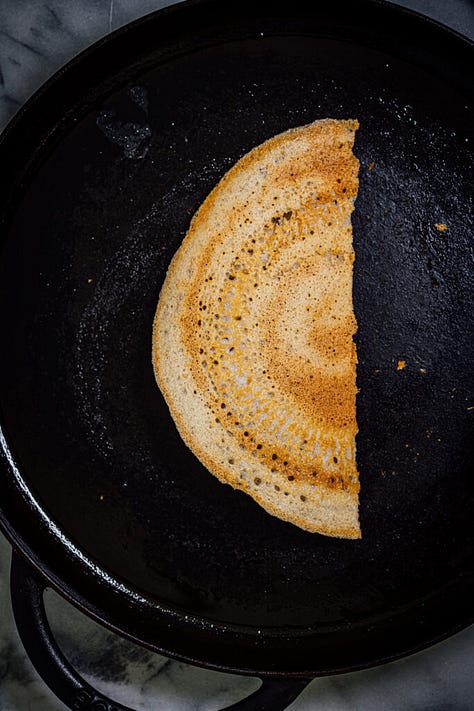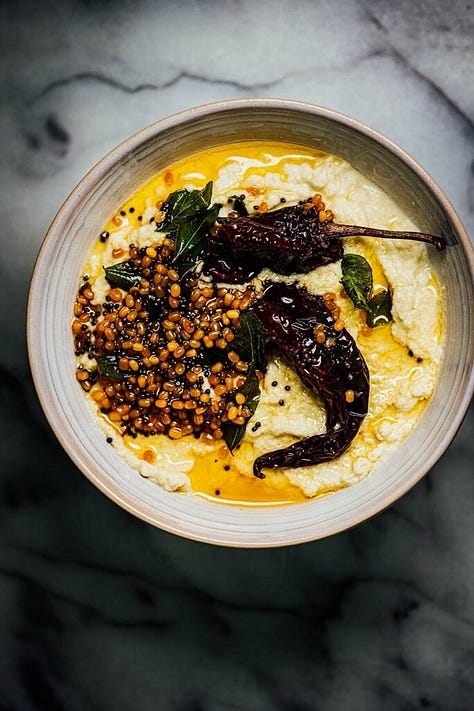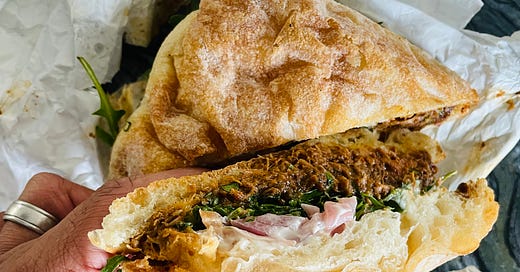The Soup of My Dreams and Your Dreams: Carrot Apple and Harissa
Plus a South Indian Themed Dinner
Hello!
There was sad news this week: the legendary Bob Moore of Bob’s Red Mill passed away. I’ve used their flours, grains, and other ingredients in my cooking. I appreciated how the company brought so many ingredients that I grew up eating in India, easily accessible here in America.
Eater just listed its top 12 culinary destinations of 2024; I’ve only been to two on the list - Sacramento and Philadelphia. A few of those countries were already on my list of places to visit, and now they’ve moved up even higher. While we’re on the topic of good food, I’ve fallen in love with Maciel’s Plant-Based Butcher Shop in L.A. I’ve eaten The Italian, The Flores, and The Tuna Salad sandwiches, which were all fantastic. And if you do stop by, get the ice cream! I love the Strawberry one, but they also carry a chocolate one with crunchy tortilla bits, another one that’s stolen my heart.
Have a great week,
Nik
🥕🥕🥕 My NEW COOKBOOK, VEG-TABLE, now a Best Cookbook of 2023 and Winner of the Golden Poppy Book Award, is now available worldwide! Please check it out, and thank you for your support. If you have a moment to spare, please leave a review for Veg-Table on Amazon, Barnes and Noble, Waterstones, or the many indie bookstores where you purchased the book. Thank you!
This week’s special recipe is the Carrot Apple + Harissa Soup from the Veg-Table cookbook I made with NY Shuk’s Signature Harissa. If you aren’t familiar with harissa, it’s an essential pantry item in my home. Harissa is a Tunisian condiment that packs a wonderful kick of heat and can heighten any dish's flavor in a second. The word harissa originated from the Arabic word harassa, which means to crush or pound, which is how harissa is traditionally prepared from chillies and spices. NY Shuk also makes a dry spice blend version of harissa; stick to the wet paste version for this recipe. And as always, add more harissa if you prefer the soup hotter.
I also use harissa to layer flavor into fish before I roast or fry, to flavor shrimp (this recipe uses the dry spice blend), or to make a big bowl of one of my favorite noodle dishes - my cheesy harissa ramen!
My Favorite South Indian Meal



As a child who loved eating dosas but unfortunately grew up in a home where no one made or knew how to make dosas, my only solace was either going to restaurants, eating them at food stalls on the street, or trying to get invited to friend’s homes where they made them. When I lived alone in America and couldn’t find them easily in Ohio (where I went to grad school), I knew this would be one of those dishes I needed to learn how to make. There was a big moment of pride when I figured out how to make dosa, and since then, I make it all the time. I even make it for my mom, who still has no interest in making them but loves to eat them.
Don't be intimidated if you’re making dosas for the first time. I’ve written out detailed notes on how to make it. It might take a few attempts to get it right, but it is absolutely worth it. Believe me, it was the best feeling in the world when I conquered the technique. If you own a copy of Veg-Table, make the Tomato Chutney on Page 253; it can be used instead of the coconut chutney or served alongside.
Book Recommendations
I’ve got two new books on my radar this month. My friend and fellow scientist, Arielle Johnson, has a book called Flavorama coming out this year, which I’m very excited to read. The illustrations strongly reminded me of Samin Nosrat’s and Wendy McNaughton’s Salt, Fat, Acid, Heat. Another book I’m looking forward to this year is British author Dina Macki’s Bahari: Recipes from An Omani Kitchen and Beyond. I don’t know much about Omani cuisine, and I’m excited to have a book to learn from finally.








